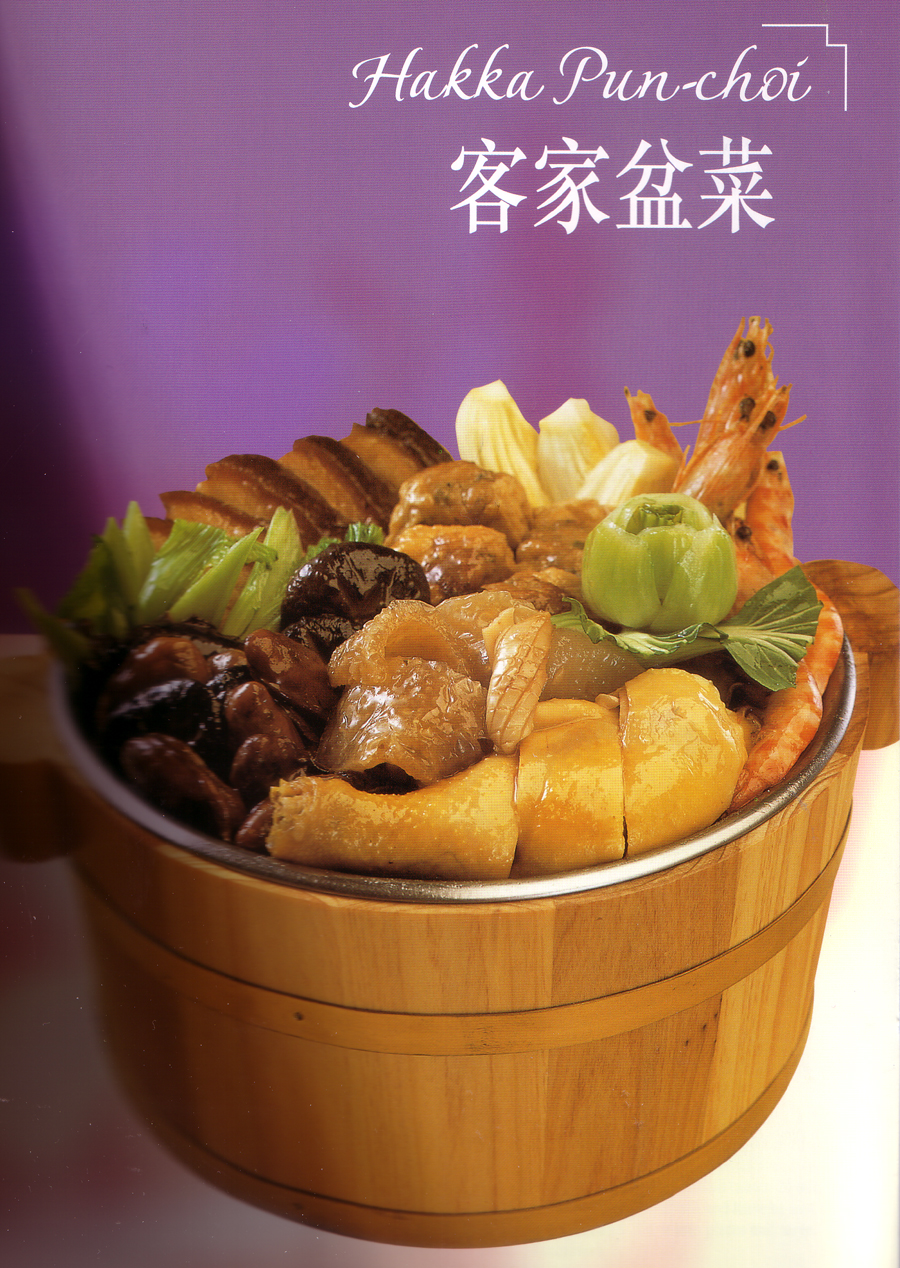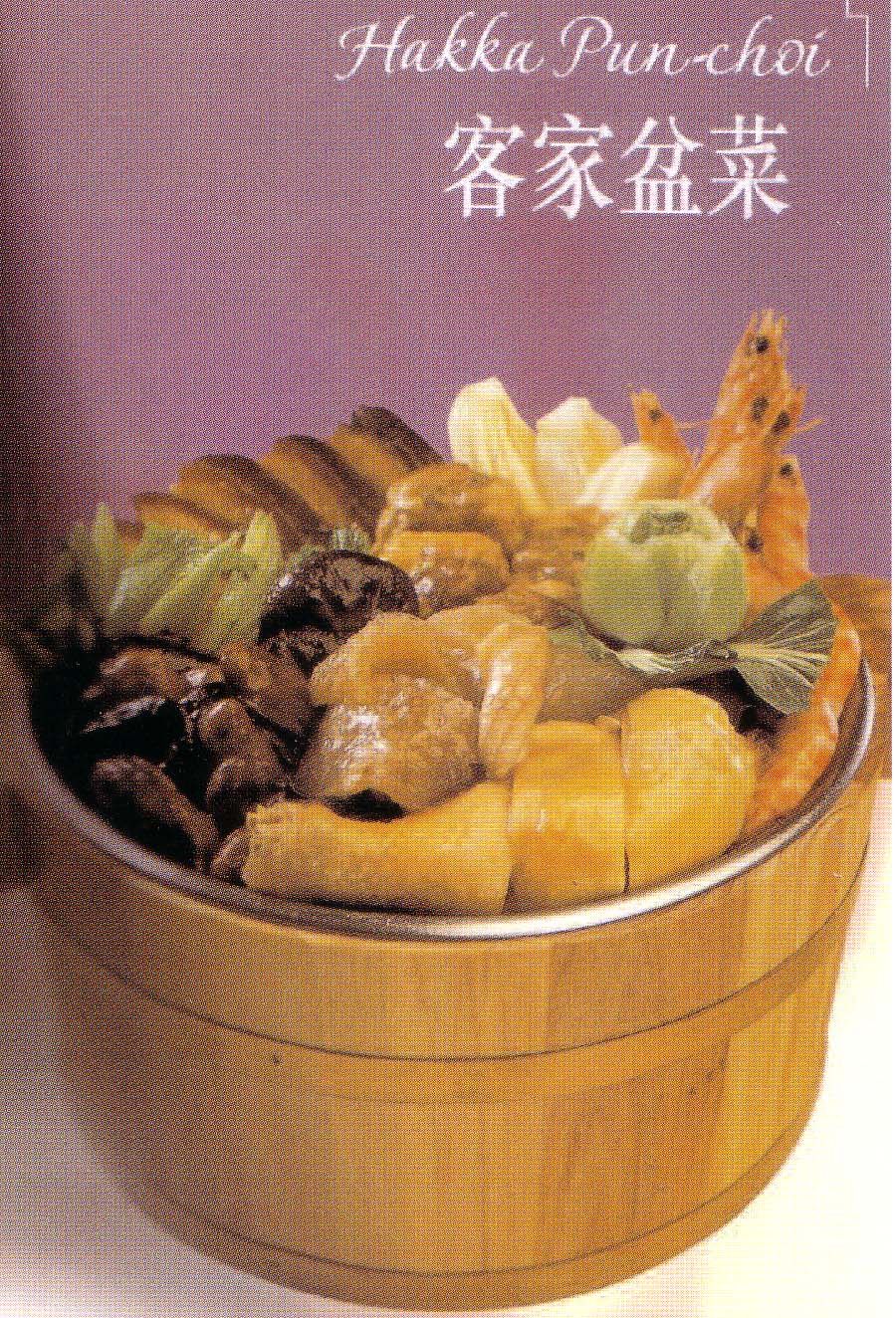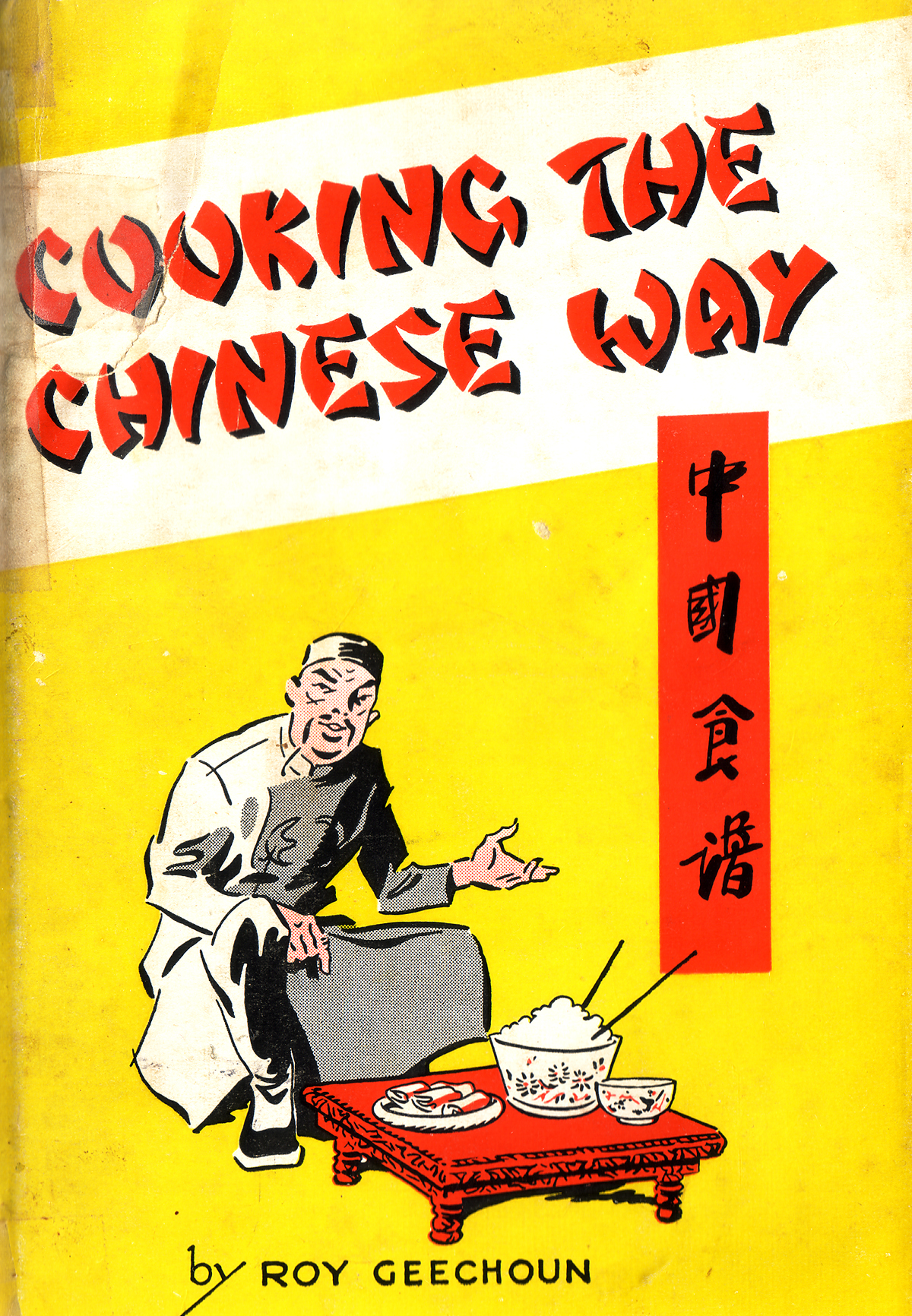
| What is Flavor and Fortune? |
| How do I subscribe? |
| How do I get past issues? |
| How do I advertise? |
| How do I contact the editor? |
Read 13042118 times
Connect me to:
| Home |
| Articles |
| Book reviews |
| Letters to the Editor |
| Newmans News and Notes |
| Recipes |
| Restaurant reviews |
| Article Index (all years, slow) |
| List of Article Years |
| Article Index (2025) |
| Article Index (last 2 years) |
| Things others say |
| Related Links |
| Log In... |
| Authors |
| Categories & Topics |
TOPICS INCLUDE: Chinatown event; Pun-choi; Macanese eatery; Portland news; Imitation shark's fin; Dragon fruit; Dongbei eateries; Black rose dish; Kudos; Yeast balls; Haw and dragon fruit; Dried oyster pancakes; Chung Young Festival
| by Jacqueline M. Newman |
Letters to the Editor
Fall Volume: 2007 Issue: 14(3) page(s): 6, 7, 8, 24, and 25
From RUTHIE and ANNE via e-mail:
We were able to get to a 'Taste of Chinatown event' and it was a blast! Are they planning any others?
RUTHIS, ANNE, and EVERYONE: If you or others missed several of these great events, worry not; there will be others. Wellington Chen of the Lower Manhattan Development Council advises the next 'Taste of Chinatown' will be on October 20th. They are held on Saturdays from noon to 5:00 pm in Manhattan's Chinatown. This busting bastion of Chinese food offers, for a dollar or two, samples of foods from many Chinatown restaurants. They are sold in front of each restaurant that participates. More than fifty did at the last one we attended. There, we tasted about fifty items and did fill up! Folks can sway to the Chinese and modern music that fills the air. Free fortune cookies were available to enjoy getting a look at your future. Come, consume, and continue to enjoy this twice a year happening. We will be there, too.
From LEONORA via fax:
 Your Summer 2006 issue reviewed a cookbook by Kitty Choi about Pun-choi dishes but it did not give a recipe for this dish. Can you provide us with one; a picture would be nice, too, pretty please.
Your Summer 2006 issue reviewed a cookbook by Kitty Choi about Pun-choi dishes but it did not give a recipe for this dish. Can you provide us with one; a picture would be nice, too, pretty please.
LEONARA: The book you are referring to is Pun-choi and Dried Seafood Cooking Course which reviewed in Volume 13(2) on page 25. Even there, it has no recipe as such. What it has is a short discussion about these dishes served in wooden basins, some ingredients and sauces of traditional pun-choi, small pictures of six of them, and a full-page view of Hakka Pun-choi. That one can be seen on this page in its metal basin and wooden bucket. Different food items are usually layered in these basins, then steamed. Varied stories are associated with them. Recently, we packed that cookbook and a few hundred more for shipment to Stony Brook University's Special Collections at their Melville library. Should you want or need more information, contact the Special Collections librarian there and call to arrange a visit; seeing the book will bring more specific answers. In the meantime, here is some of its information. The recipe below is intended to make, they say, five catties.
From GRETCHEN via e-mail:
Enjoyed the restaurant review of the Macanese eatery near Los Angeles in Volume in Volume 14(1) on pages 14 and 36. Can you share some recipes and restaurants from Macao?
GRETCHEN: You and others might be interested in knowing that Macao on a Plate by Annabel Doling was reviewed years ago in Volume 3(1) on page 17. There are seven recipes in our copy, the most Portuguese one titled Codfish with Mashed Potato. Only one recipe seems very Chinese; it is: Chef Leong's Sautéd Shrimps and Scallops with Honey Beans and Fungus. The above mentioned book lists forty-six Portuguese/Macanese eateries, twenty-six Chinese ones, and twenty-one called 'Other.' In this latter group are Japanese, Indian, Thai, Korean, and Italian restaurants, among others. Your library should be able to get you a copy using Interlibrary Loan. In addition, the author, now known as Annabel Doing Jackson, wrote Taste of Macao which was reviewed in Volume 11(3) on page 31. It has sixty-two recipes, many wonderful bi-cultural combinations, one of which appeared in that issue. That book was published by Hippocrene. One can contact the Instituto de Formaçao Touristica in Macao, for current restaurant information. Should you go there, Mong-ha, Macao's hotel training school has a restaurant worth visiting.
As to your recipe request, our memories of Macanese food are dim. Try to contact the restaurant reviewed in the issue that tantalized you, called Macao Street. Also try Chef Leong's recipe in the Annabel Doling (now Jackson) book. It uses equal amounts by weight of shrimp, scallops, and honey beans along with fungus (soaked), cooking oil, sugar, garlic, cornflour, and Chinese wine. The instructions say to stir-fry for two minutes and season with oyster sauce, then serve.
From BETH in OREGON:
The article enclosed is from Oregonian Newspaper in Portland Oregon.
BETH: You were the first in what turned out to be many who wrote about Joe and Theresa Graedon's article about soy sauce to relieve pain for a cook's minor burn. Their article reports of a man who called in to their public radio program to recommend this 'People's Pharmacy' idea. The Graedon's advise they do not know how it works, but have heard that it does from several including an Army Ranger who used it for combat-related burns. Anyone out there able to shed more light on this kitchen cabinet pain reliever?
From JOSEPH via e-mail:
Thanks for your one imitation shark's fin recipe. Seems to me you would provide an environmental service with more of them.
For JOSEPH and OTHERS: Here is another to get your creative juices flowing; hope you will develop yet others and share them with us.
From WILLIAM via e-mail:
For your information and that of your readers, ideas for using dragon fruit include one served on a Cathay Pacific Airlines flight I took in August 2006. It was a fruit salad with cubes of dragon fruit, kiwi, and cantaloupe. One can use any kiwi recipe and substitute dragon fruit for the kiwi. One can also make a dragon fruit leather, the eating kind, from dragon fruit by cutting one-third inch thick slices of dragon fruit including its skin and dehydrating them. Put them in a single layer in a very low oven overnight. Also, hope your readers take a look at these links for more ideas:
www.recipetips.com/recipe-cards/t–2711/dragon-fruit.asp
www.abc.net.au/brisbasne/stries/s774911.htm
www.orientalfood.com/cgi-bin/sql_rcp_view.pl?id=1542
 From DANIELLA via e-mail:
From DANIELLA via e-mail:
Went to Liao Ning on your recommendation; and yes Dongbei food is different and delicious. The Fried Fish really should not be missed, but we did miss figuring out what is pasted to it. Don’t think you praised it highly enough. We brought a camera and here is a picture of that fantastic fried fin item; feel free to use it. Also, one of their new awning with their own name;. Use that picture, too, if you like. What they still do not have is a menu all their own. People there were eating silk worm cocoons. Have you ever indulged in them? We could not get ourselves to do so?
 <
DANIELLA: A picture is worth a thousand words and we thank you for your two thousand plus. We also thank you for telling us there are two other Dongbei restaurants around the corner. We will eat there and report on other Chinese food including from North East Restaurant and its sister establishment in the next issue or a future issue. Silkworms will be there, too. Oh, about the fish, its topping is a hot pepper paste made in house, cumin seeds, too.
<
DANIELLA: A picture is worth a thousand words and we thank you for your two thousand plus. We also thank you for telling us there are two other Dongbei restaurants around the corner. We will eat there and report on other Chinese food including from North East Restaurant and its sister establishment in the next issue or a future issue. Silkworms will be there, too. Oh, about the fish, its topping is a hot pepper paste made in house, cumin seeds, too.
From PETE via e-mail:
Do the Chinese really grow and eat black roses? And if so, where can I purchase black rose bushes?
PETE: Believe you have been befuddled about eating black roses. There is a Chinese recipe called Black Rose Beauties. Do not expect real flowers, just really fine flavors.
From KEVIN via e-mail:
The new issue arrived and not when anticipated, nonetheless, I am glad I did not miss it. It really is a good issue.
KEVIN and OTHERS who wrote: Many thanks to you and others who advised that they were delighted when this last issue did come, even though not arrive as promptly as others have. Wish we had control of postal problems. Bulk media mail, which is how this magazine is shipped in our country as 'flats' seems to be lots slower in some zip code areas than others. If you want yours to come by 'First Class' mail, postage and handling will add ten dollars to your subscription bill in the United States, double that if you want it shipped 'Airmail.' There is no extra charge for same in Canada, they already pay a higher subscription price for this postage and handling, as do others elsewhere in the world.
From ANNY via e-mail:
I want to report where to buy yeast balls in Seattle WA. A friend bought them for me in Chinatown in a little store called Gom Hong at 709 S. King Street. Hope this info is helpful to others in the Seattle area.
ANNY: Thanks for advising readers. We did receive many queries about this particular food product. Many queries are easy to solve as we suggest one of the many Chinese market web sites. Why this particular one befuddled folk we know not. Maybe when found, they suspected that these two-to-a-package small hard balls looked like moth balls and they were wary.
To all readers who want to locate a particular product in their area, we suggest using the web. First find the Chinese character and transliteration of the food item. If needed, ask a local Chinese restaurant to help solve this query. They or their Chinese customers should be able to help with the Chinese name and even advise where to purchase that item.
From BETTY via e-mail:
Can you advise what are the Chinese foods called haw and dragon?
BETTY: Both are fruits. Haw is better known as the Chinese jujube or Chinese date. Shanzha or hawthorn is one of many varieties of the haw fruit. It is a red fruit, often candied and on a stick, it is consumed fresh, canned, and candied. The Chinese believe it lowers blood pressure and reduces cholesterol. Botanically known as Crataegus pinnatifida, this fruit is also used as a tea.
Fire dragon fruit, also known as pitahaya or pitaya, is a related fruit of a cactus plant. These fruits are related to, but not the same as night-blooming cereus. A dragon fruit booklet was discussed and illustrated in the last issue of Flavor and Fortune on pages 6 and 7. Botanically in the Hylocereus undatas plant species, there are many varieties, all eaten fresh, made into beverages, preserves, ice creams, and other cold items. See the letter from William, above and check out page 7 in that last issue. It had the first printed recipe we ever saw using this fruit; it was called Dragon Fruit Pancakes. William Chow is the author of that booklet, and he suggests making a dehydrated fruit leather from this fruit. We love haw fruit as a tea; you might, too.
 From ISADORA via e-mail:
From ISADORA via e-mail:
Last week we had a great fried pancake mostly made, we think, from dried oysters. We say they were dried because the taste was somewhat strong and very delicious. There may have been a mite of pork mixed in, but those at our table were unsure of that, and the staff did not understand our question. In any case, we did love it and wonder if you can locate a recipe for us.
ISADORA: The pancake you are referring to is popular among many Chinese, Cantonese and Fujianese in particular. It can have ground pork or ground beef in it, even minced shrimp or another fish or sea food. Here is one recipe without any of these additions, add as much meat as suits your fancy. Incidentally, this recipe is from a small book first printed in Melbourne Australia in 1948, and reprinted at least eight times since. The cover is shown below. Cooking the Chinese Way is by Roy Geechoun and published by the WD Joynt & Company Pty Ltd of Melbourne.
From WALTER in DUBUQUE IA:
What is the Chung Young Festival; and are there special foods for it?
WALTER: We have usually seen this holiday, perhaps better known as the Double Ninth Festival, spelled Chung Yeung. Transliterations do vary, but it is always celebrated on the ninth day of the ninth month when families go hiking, and visit the graves of their ancestors. No specific foods are usually mentioned, though some families do have special foods their ancestors may have liked that they bring to their grave sites.
Chrysanthemum Jelly Drops is the name of one dish a family we knew always prepared. They have since passed on and their recipe was simply to make plain gelatin first soaking it in warm water, then adding boiling water, sugar, and chrysanthemum petals. As they got on in years, they used commercial lemon gelatin powder adding one cup boiling water to it, then half a cup of cold water. When this well-stirred liquid was quite cool but not set, they added the petals (but not the sepals) of a large white chrysanthemum flower and stirred it gently. They poured this into a mold for gum drops and let it set. Just before leaving for the cemetery, they removed them and took them to the grave site.
For ALL who asked about LOTUS: In the last handful of years, many have remarked that we did shortchange a food whose every part is used by the Chinese. Apologies and amends; see the article that starts on page 11 of this issue.
| Pun Choi |
|---|
Amounts as desired: radish, chicken, bean curd sticks, medium-sized prawns, pork skin, deep-fried eels, dried squid, minced fish balls, pork belly, roast duck, dried mushrooms, and Chinese cabbage; and one batch of sauce Sauce ingredients: 5 pieces tsaoko (black cardamon) 1 Tablespoon whole fennel seed 1/2 cup sugar 1/2 cup bean paste 4 squares fermented red bean curd 10 cloves peeled and smashed garlic 10 shallots, peeled 2 leeks 2 Tablespoons lard 2 Tablespoons Chinese rose wine 3 Tablespoons preserved cabbage, minced 3 to 4 Tablespoons Chinese brown rock sugar 1 onion, coarsely diced Preparation: 1. Layer main ingredients in a pun choi bowl or another heat proof container. 2. Mix sauce ingredients and pour them over the items in the bowl. 3. Steam the bowl over boiling water until all items are tender. This takes one to two hours, depending on the amounts and items used. |
| Scallops with Imitation Shark's Fin |
|---|
10 scallops on their shells or on ones made of aluminum foil 1 Tablespoon vegetable oil 5 Tablespoons soaked mung bean noodles, cut into two-inch lengths 1 Tablespoon fried shallots 1 teaspoon chicken bouillon powder dash ground white pepper 1 teaspoon sugar 1 Tablespoon oyster sauce 1/2 teaspoon sesame oil 1/2 scallion, green part only, minced Preparation: 1. Rinse the scallops and remove any hard part attached to their shells, then using half the oil, brush insides of the shells or the aluminum foil. 2. Heat a wok or small fry pan, add other half of the vegetable oil and toss in mung beans noodles, fried shallots, bouillon powder, pepper, sugar, and oyster sauce. Stir-fry one minute, no more, remove from heat and add sesame oil. Pour this over the scallops, and steam over boiling water for five minutes. 3. Sprinkle scallions over them all, and serve. |
| Black Rose Beauties |
|---|
1/4 pound ground pork 1/4 teaspoon salt 1/8 teaspoon ground white pepper 1 Tablespoon cornstarch 1 Tablespoon water chestnut flour 2 teaspoons soy sauce 2 teaspoons sesame oil 3 salted duck egg yolks 6 slices cucumber, coarsely minced 6 sheets black seaweed, cut in quarters Preparation: 1. Mix meat with salt, pepper, cornstarch, water chestnut flour, soy sauce, and sesame oil. Divide into twelve parts. 2. Cut each duck yolk into quarters. 3. Take two sheets of seaweed and put one on top of the other, on an angle so there are eight points. Distribute a very small amount of the minced cucumber in the center of each of these. 4. Take one part of the mixed meat, put it in the center of the seaweed and on the cucumber pieces. Make the seaweed into an open ball looking like a flower, and top each one with one piece of egg yolk. 5. Put on a microwave safe dish, cover with an inverted bowl, and microwave on high for six minutes. Then serve. |
| Hawthorn Tea |
|---|
4 ounces dried haw fruit, diced fine 4 ounces roasted barley, ground 1 and 1/2 cups roasted glutinous rice, ground 1/2 cup sugar Preparation: 1. Dry haw fruit in a low oven for one hour, then turn oven off and let stay overnight. Remove and grind fine. 2. Bring two quarts of water to a boil, add all the above ingredients, stir and reduce heat and simmer stirring until a thin paste is formed. Cool and refrigerate in a wide-mouth jar. 3. Take one tablespoon of the paste and mix with a cup of boiling water, and drink as one would a cup of tea. |
| Dried Oysters and Mushrooms |
|---|
3/4 pound dried oysters 12 dried Chinese black mushrooms 1/4 pound bamboo shoots 1/4 pound water chestnuts 1 onion 2 stalks celery 3 pieces Chinese cabbage 1 Tablespoon vegetable oil 1 clove garlic, peeled and minced 1 teaspoon salt 3 scallions Preparation: 1.Soak oysters and mushrooms in separate bowl for four or more hours. Then remove stems from mushrooms, and squeeze out the liquid and reserve it. Discard liquid from the oysters. 2. Cut drained oysters bamboo shoots, mushrooms, onion, celery, and Chinese cabbage into quarter-inch cubes (or mince them, if preferred). Mix oysters and onions in one bowl, all other diced ingredients in another. 3. Heat oil and fry garlic for one minute, then add oysters and fry for another; then cover, reduce heat, and simmer for three minutes. Then add salt and the diced vegetables and stir well. 4. Add one cup of mushroom water and simmer for ten minutes. Can be thickened with one tablespoon of cornstarch mixed with two tablespoons of water, or it can me made into patties and fried in half cup of oil for one to two minutes per side. |

Copyright © 1994-2025 by ISACC, all rights reserved
Address
3 Jefferson Ferry Drive
S. Setauket NY 11720